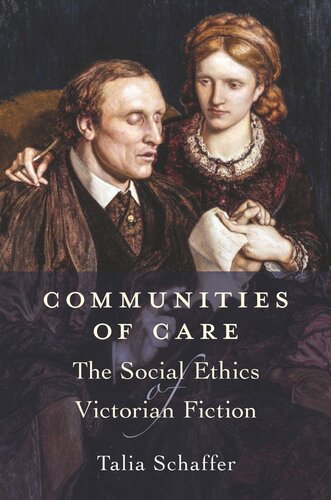

Most ebook files are in PDF format, so you can easily read them using various software such as Foxit Reader or directly on the Google Chrome browser.
Some ebook files are released by publishers in other formats such as .awz, .mobi, .epub, .fb2, etc. You may need to install specific software to read these formats on mobile/PC, such as Calibre.
Please read the tutorial at this link: https://ebookbell.com/faq
We offer FREE conversion to the popular formats you request; however, this may take some time. Therefore, right after payment, please email us, and we will try to provide the service as quickly as possible.
For some exceptional file formats or broken links (if any), please refrain from opening any disputes. Instead, email us first, and we will try to assist within a maximum of 6 hours.
EbookBell Team

4.1
40 reviewsWhat we can learn about caregiving and community from the Victorian novel
In Communities of Care, Talia Schaffer explores Victorian fictional representations of care communities, small voluntary groups that coalesce around someone in need. Drawing lessons from Victorian sociality, Schaffer proposes a theory of communal care and a mode of critical reading centered on an ethics of care.
In the Victorian era, medical science offered little hope for cure of illness or disability, and chronic invalidism and lengthy convalescences were common. Small communities might gather around afflicted individuals to minister to their needs and palliate their suffering. Communities of Care examines these groups in the novels of Jane Austen, Charlotte Brontë, Charles Dickens, George Eliot, Henry James, and Charlotte Yonge, and studies the relationships that they exemplify. How do carers become part of the community? How do they negotiate status? How do caring emotions develop? And what does it mean to think of care as an activity rather than a feeling? Contrasting the Victorian emphasis on community and social structure with modern individualism and interiority, Schaffer’s sympathetic readings draw us closer to the worldview from which these novels emerged. Schaffer also considers the ways in which these models of carework could inform and improve practice in criticism, in teaching, and in our daily lives.
Through the lens of care, Schaffer discovers a vital form of communal relationship in the Victorian novel. Communities of Care also demonstrates that literary criticism done well is the best care that scholars can give to texts.